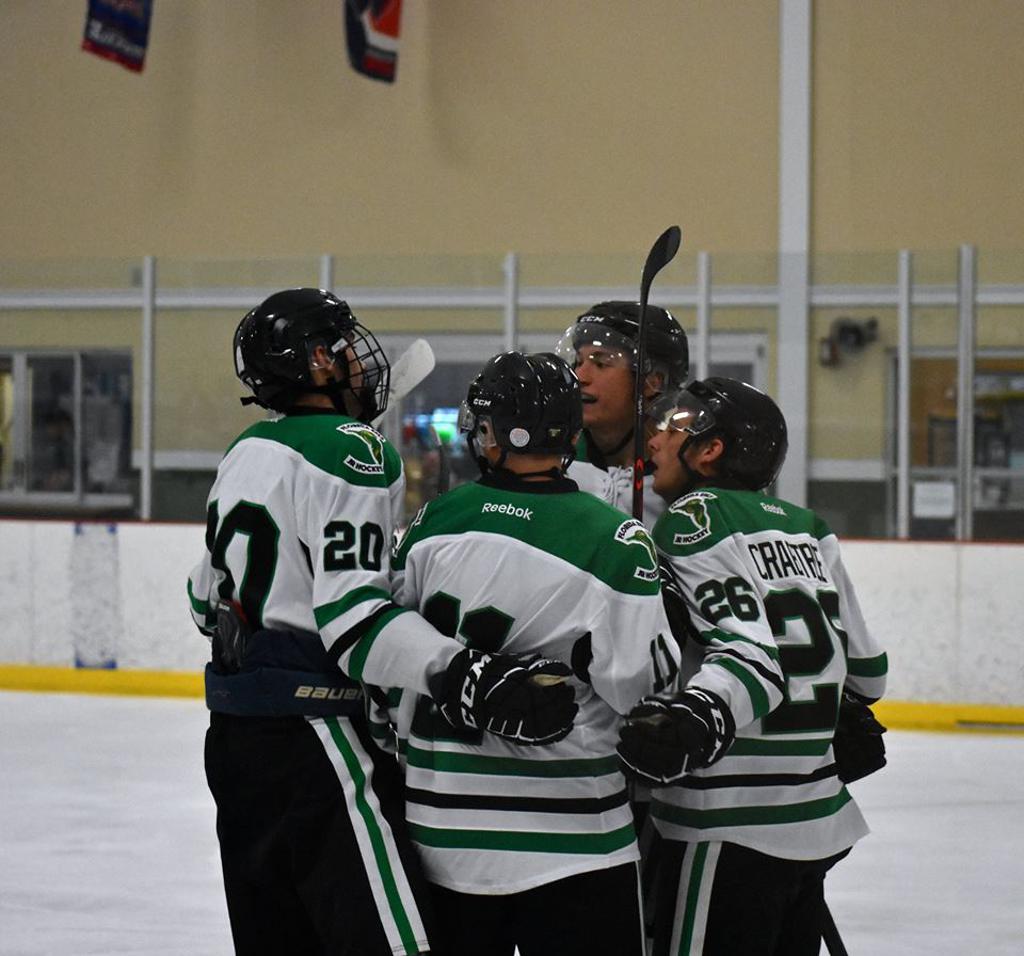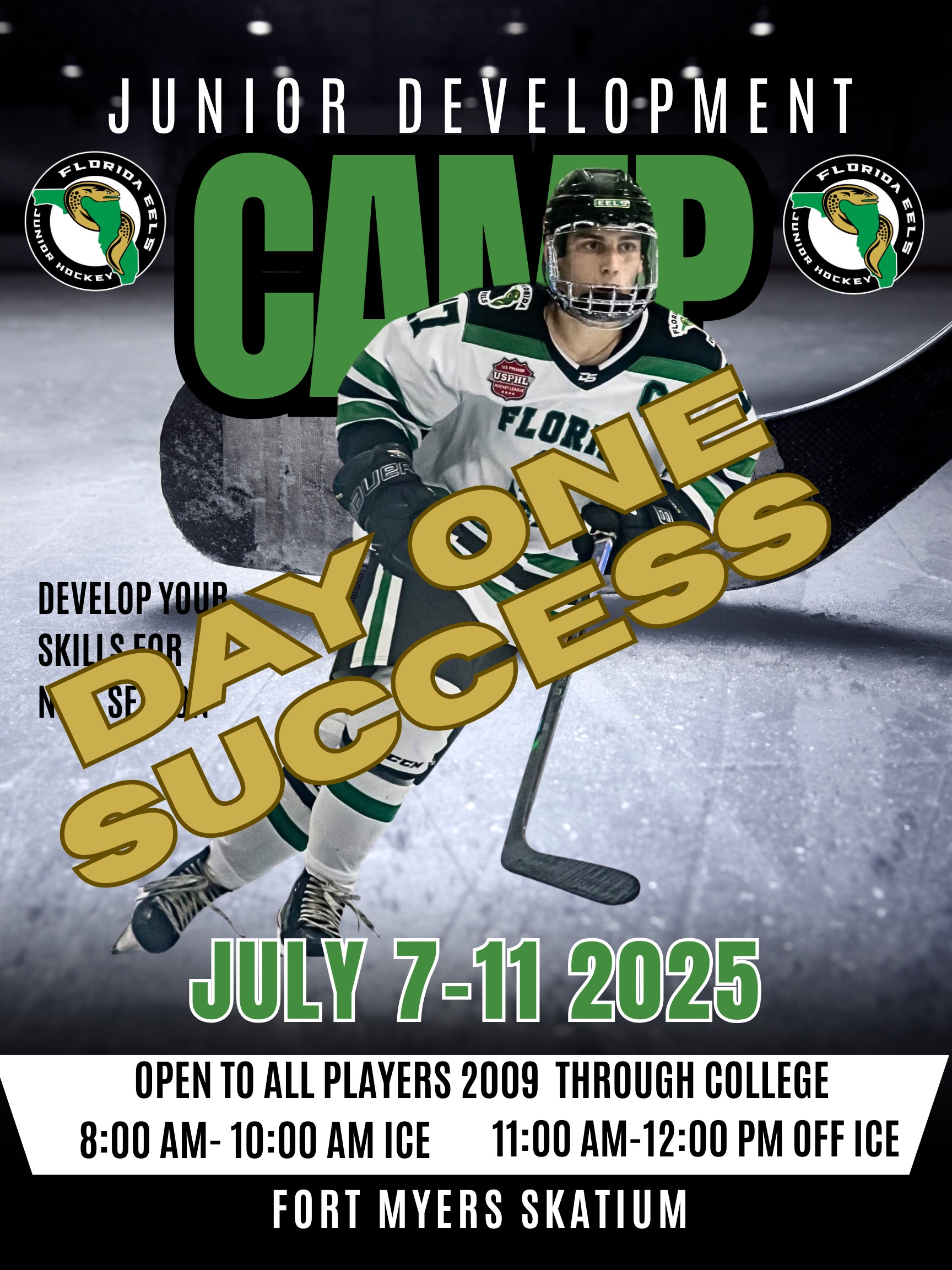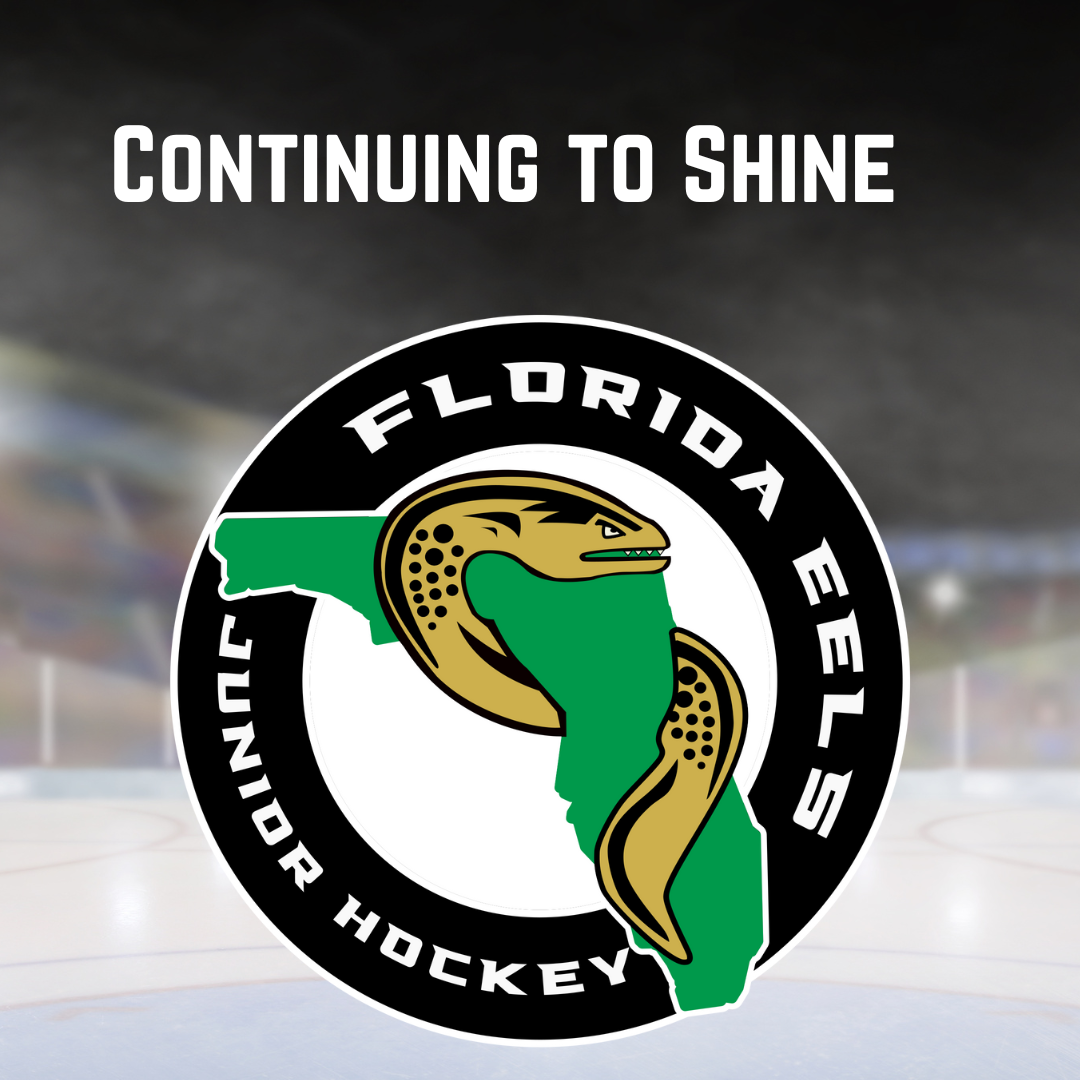National Covergae
Florida Hockey Life Magazine features the USPHL: Florida Division A Fertile Training Ground
By Steve Lee / Florida Hockey Life, 10/10/18, 10:00AM EDT
The following was printed in the October 2018 print edition of Florida Hockey Life Magazine, published at the end of September. Photos courtesy of Tia Preece / Florida Jr. Blades.
The dream of Florida hockey players and their families has always been staying in Florida and playing youth hockey at
the highest level.
That dream is a reality. The USPHL offers these players some of the best coaching available along with great competition. The stigma of Florida not having good hockey has been put to rest.
Great players at all levels have emerged from the Sunshine State.
College teams throughout the country now have Florida players on their rosters, as do NHL teams.
A scout once told me, “if you can play, we’ll find you.”
Like the rest of the United States Premier Hockey League, the Florida Division lures junior hockey players from near and far. While more and more players from Florida fill the rosters of those Premier and Elite teams, the division still draws from other states, as well as internationally.
The reason is simple, really. Organizers and players concur that the USPHL ranks as the top junior hockey program when it comes to developing players for the college level.
And that, they say, is why the league is thriving.
Overall, the USPHL includes multiple junior levels for players ranging in age from 16-20. It consists of 89 organizations nationwide. In 2017, the USPHL added a high-level, tuition free junior league called the National Collegiate Development Conference. The NCDC is at the top of a three tier system that includes the Premier and Elite Divisions.
“Here in 2018, we just acquired the Eastern Hockey Federation youth hockey program, and now the USPHL is the largest amateur hockey organization in North America,” said USPHL Commissioner Richard Gallant. “Florida remains a growth area for hockey. More and more players are remaining in Florida to play, increasing the competitive level of hockey and allowing all these teams to compete at the national level.”
“The number one priority of our league is development towards college,” said Frank Scarpaci. Scarpaci is the founder of the Florida Eels, who started at the Ellenton facility in Bradenton, and now are based in Fort Myers. He is also the South Regional Commissioner for the USPHL Premier and Elite Divisions.
“The USPHL has placed more players in Divisions I, II and III than any other Tier III league,” said Scarpaci. “If players want to play college hockey, they come here. They get tremendous training, great visibility and exposure; and they get into college.”
The Eels, who started 15 years ago in another league but were part of a 2013 merger with the USPHL, are among a handful of programs in Florida. The others are: the DME Swamp Rabbits in Daytona, Florida Junior Blades in Estero, Palm Beach Junior Hawks in Lake Worth, and Tampa Bay Juniors in Wesley Chapel.
“The Eels are among the leaders in the country in college placement in Tier III hockey. Ranking at the top are the Islanders Hockey Club, the Junior Bruins, the New Jersey Hitmen, the South Shore Kings, the New Hampshire Jr. Monarchs, the Northern Cyclones and other clubs in the NCDC,” Scarpaci said. “Junior hockey in Florida is very, very strong.”
Actually, the Eels have placed 18 players in colleges this past year with a half-dozen of them from Florida. Those scholarships average more than $25,000.
Florida-born Clayton Boyd, now a sophomore at Division III Neumann University in Philadelphia, is a testament to the Eels program. The 21-year-old, who grew up playing hockey in south Florida since he was 5, is grateful for Scarpaci’s efforts in helping him land a scholarship.
“He’s the best in moving guys on to college,” said Boyd, who counts former Eels Zac Boyle, a sophomore, and freshman Brandon Rosario as his college teammates.
“I tell our guys, ‘You earn it by doing the extra things,’” Scarpaci said. “We tell kids it’s all about going to college. We’re not all about getting kids into the National Hockey League. If that happens, that’s frosting on the cake.”
The Eels are not just hockey players, they are entrenched into the community under the guidance of Scarpaci, who has had them help out with food drives, read to schoolchildren and raise funds for a young cancer patient.
“I liked that a lot,” Boyd said of getting involved in community projects. “It helped the team bond.”
“The goal here is for our kids to become great citizens and that’s really, really important,” Scarpaci said. “Our team building is helping people in the community.”
Being involved in their respective communities is somewhat of a tradition for the Florida teams. Todd Pococke, a coach with the Junior Blades, takes pride in scheduling friendlies against the Eels to raise money for food drives.
His players also visit elementary and middle schools to read to students, and host Night to Shine, in which the Junior Blades volunteer to help people with disabilities.
“It’s not just about them playing (hockey),” Pococke said.
“We want to help them as hockey players and as young men.”
The Junior Blades have won two Elite titles with another finals appearance since the 2013-14 season, which in turn helped pave the way for their Premier program, which is in its second year.
“We’ve always been trying to do that, to get to the higher level team,” Pococke said. “Finally, with a little bit of expansion and travel, that allowed us to have a higher level team. The whole model is geared toward development and progression.”
At Florida Hospital Center Ice, home of the Tampa Bay Juniors’ Premier and Elite teams, sixth-year coach Garrett Strot has witnessed a progression as well.
“For us, the Tampa area is growing due to the Lightning and all they’ve done,” said Strot, alluding to the fact that the National Hockey League team has been in three of the past four Eastern Conference finals and, in 2015, advanced to the Stanley Cup Finals.
“Our Elite team is basically kids from the area,” said Strot, noting that the premier team is comprised of more out-of-state and international players. “I think the talent is just going to keep rising up because of the reputation of the league.”
“The Tampa Bay Juniors allow my child to play local yet compete nationally. He gets to go to his high school and still have his friends,” said Gary Margosian, of Lutz. “It’s an added plus that the Tampa Bay Juniors have an exceptional program with coaches whose focus is on developing the boys to go play in college and upward.”
Vincent Margosian is in his second year with the Wesley Chapel based team. The 6-5, 220-pound high school senior gets to play only 20 minutes from his home. His dad sees that as a major plus.
“High school children should still be at home with their parents learning the necessary guidelines that formulate them as great human beings,” Gary Margosian added. “Talented hockey players usually had to leave their families at a young age to go up north. Then you are relying on their coach and their billet family to make them whole as people.”
Strot, along with other coaches throughout the state, also lauded the players for their camaraderie — on and off the ice.
While the teams go hard at one another, there are very few excessive hits or dirty play.
“It’s very competitive, but the coaches have a respect for each other,” Strot said. “The teams compete hard, but you don’t see a lot of stuff after the whistle.”
While players are constantly ascending through the ranks with many ultimately leaving for college teams, coach Don Babineau of the Palm Beach Junior Hawks feels that such camaraderie and respect are why players return for another season.
“We want them to be loyal to us. We want them to come back and play for each other,” he said, adding that players getting involved with community projects and working with younger levels on the ice also helps “just to show we care about the kids.”
“We’re slowly tapping into different things (like fundraising for community groups and military nights). It’s very important to give back to the community. That’s what makes the world go round,” added Babineau.
While the Hawks have been around since 2005, both at the
Premier and Elite levels, Babineau said part of the reason players want to join and stay in the league are the level of play and opportunities they receive.
“It gives them a lot of options to play more games (than in some other leagues),” he said, adding that additional showcases help as well.
Then there is the camaraderie of players from Florida and other states playing as teammates alongside those from other countries. Babineau pointed out that his program includes players from Florida, Canada, Sweden, Russia, Czech Republic and even Argentina.
Having those kind of relationships, Babineau said, “is more of a camaraderie thing. I think it brings everything together.”
Ryan Kravetz, former owner of the Daytona Racers, who now are the DME Academy Swamp Rabbits, is glad that DME added a Premier team for this season, following two seasons of play at the Elite level.
While he understands that moving players up a notch is the league’s primary role, that objective also has attributed to the Swamp Rabbits’ inconsistencies on the ice. Kravetz noted that in 2015 the Elite team got off to a strong 9-2 start before struggling the rest of that season due to some players moving on, including a standout goaltender.
“We haven’t made the playoffs yet, but we’ve produced a lot
of good players,” Kravetz said.
On a brighter note, the Premier team, which won just six games all of last season, got off to a strong 4-0 start.
“We’re happy to have an upper mobility system. We’re very pleased with that,” said Swamp Rabbits coach John Clippert, who previously coached in Michigan and works closely with that program’s general manager, Frank Dilibirti.
“We want to move players on, but at the end of the day, sometimes you move too many players on,” Clippert continued. “I look at that as a feather in your cap, not a negative thing.”
Clippert also noted that, like the other Florida teams, there are several in-state players that dot the rosters of his program’s Premier and Elite teams. He also welcomes players from other countries, noting that they come here to simply get another opportunity to advance.
“It gives foreign players an opportunity to play in front of college scouts,” Clippert said.
Perhaps Strot echoed the sentiments of many involved with the USPHL in Florida when he said, “The league has come a long way. There’s no comparison of the talent level (compared to six years ago when he arrived from Minnesota). I believe this is the best junior league.”














